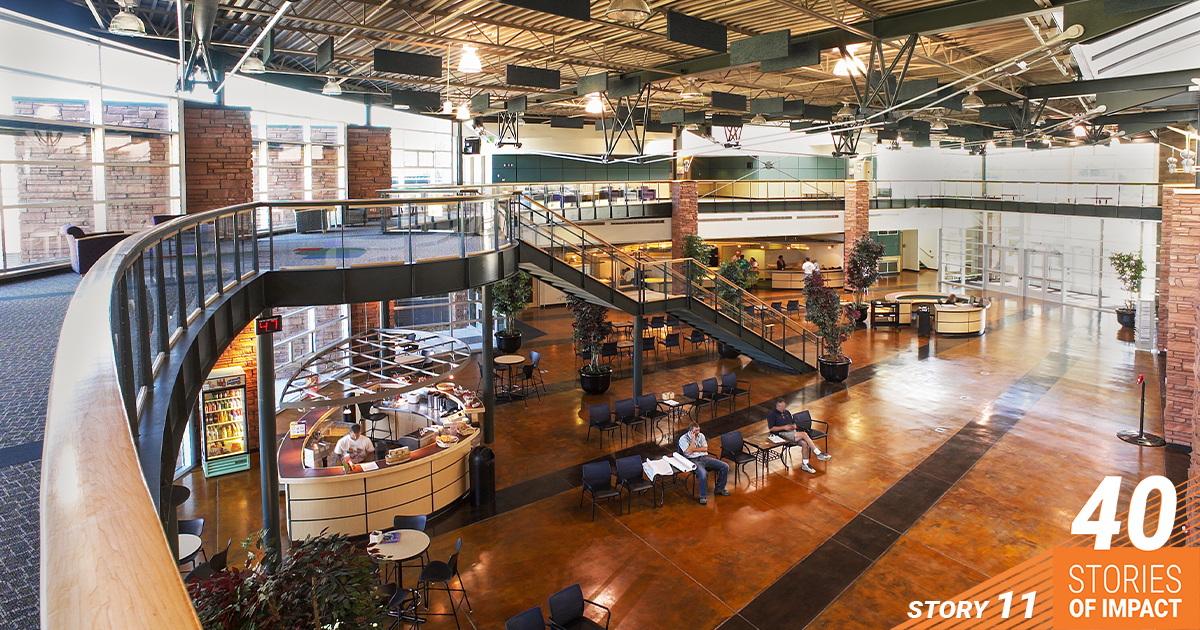
In today’s environment, it is impossible to separate the notion of building quality from sustainability and energy efficiency. Getting to this point has its roots in the environmental movement of the 1960s and the 1993 foundation of the U.S. Green Building Council (USGBC). This organization then developed a set of criteria for which to design and construct a new standard of green building, known as LEED® – Leadership in Energy and Environmental Design. LEED awarded the first certified building in Colorado in 2003 and the program has continued to evolve. Since then, other programs such as CHPS – Collaborative for High Performance Schools and Green Globes have also entered the marketplace as additional standards of sustainable building practice.
As builders who value quality and sustainability, we’re proud to have completed 20 sustainable certified building projects, and currently have another five under construction. These certified projects include the Pikes Peak Regional Development Center, which was the 15th LEED certified building in Colorado, and the 2nd in the City of Colorado Springs, certified in November 2005.
Pikes Peak Regional Building Department (PPRBD), working with LKA Partners to design their new Regional Development Center, wanted to create a “one-stop” multi-use facility to enhance and expedite building planning and permitting services. This new facility serves residents, as well as the building and development community of the City of Colorado Springs and El Paso County. PPRBD wanted to ensure that this space for the construction and building regulatory agencies, exemplified the best in sustainable building practices, as a model for the private industry.
Working together with LKA Partners and the PPRBD team, sustainable building design was incorporated throughout the project from skylight and solar tube daylighting to high efficiency glass systems and advanced lighting controls and efficient mechanical systems such as ice storage and condensing boilers. Other sustainable features of the building included use of low VOC materials, exterior sunshade canopies, heat recovery and sustainable site design such as low water requirement landscaping, stormwater retention and recycling ponds and low water runoff conservation devices.
Since the building’s completion numerous colleagues and industry organizations have stepped foot inside its doors for multiple reasons from plan review and permitting, to community meetings and boards related to the regions development and construction industries. Nunn Construction’s Phil LaSarre serves on the Pikes Peak Regional Building Department’s Variance Committee board and Andrea Slattery is a board member on the City of Colorado Springs Planning Commission. “I am proud to work in a region that went the extra mile as an early adopter of sustainable building practices. This high-quality space for our industry and community continues to be a welcoming and functional space,” says Phil LaSarre about the impact the project has had on our region since its completion in 2005.
In the years since Pikes Peak Regional Development Center achieved LEED certification, we’ve been proud to see that many of our other projects chose LEED certification to guide their sustainability goals: Western Colorado University’s New Student Union & Taylor Hall Renovation, Lake George Charter School, Big Sandy PK-12 School, UCCS Academic Office Building, Montezuma-Cortez High School, CSU-P Occhiato Student Center, and most recently Fort Lewis College’s Schlessman Family Hall – Health Sciences Center. In fact, according to the USGBC website, Colorado ranked first in the nation for the highest gross square footage of LEED certified space per person and certified 102 projects in 2019 and has been in the Top 10 states for LEED certified space per capita since 2010.
Benefits in using these LEED certified spaces can be higher recruitment and retention rates; increased productivity; cleaner air quality which can help reduce impacts for asthma, allergies, depression and stress; and access to daylight. LEED certified projects also are better for the environment with their help in tackling climate change through reduction in pollution and improved air quality, reducing waste and utilizing certified green materials.
We’re excited to have witnessed the evolution towards more sustainable building practices over the last several decades and are eager to play a part in how the built environment continues to innovate to improve spaces for future generations.

